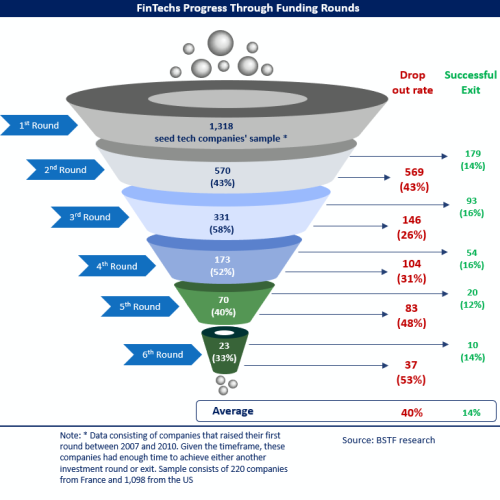FinTechs must spend investor funds wisely and choose the right strategic approach for growth
Investment in FinTechs is at record levels and they must scale in an ever complex and competitive marketplace
Investment in FinTech businesses has been reaching new heights on a consistent basis for some time now. Last week Stripe received a further $600m in funding and the company is now valued at $95Bn. This marquee headline overshadows a plethora of smaller investment rounds in the last few weeks. It needs no more than a quick glance at the FinExtra headlines recently to provide more than sufficient evidence that FinTech, and more precisely investment in FinTech, is in rude health.
Investment from venture capital or private equity backers is predicated upon a strong business plan with aggressive growth targets at its core. Financing volumes for investment deals done with European FinTechs reached $10Bn in 2020 (Source: FT Partners FinTech Almanac 2020). We may safely assume that a significant proportion of that figure will be used to scale the businesses that received the funding. They must expand geographically and organisationally to increase their customer base, whilst also improving their product and service offerings and/or potentially diversifying them so that they can move horizontally or vertically into areas where opportunity is greatest. This is not easy.
Despite the headlines celebrating the latest huge funding rounds, the reality for the majority of FinTechs is that they will either stagnate or go out of business. Our research at Be | Shaping the Future (BSTF) on European and North American FinTechs indicates that 40% of FinTechs on average drop out of the investment / funding cycle at each stage of funding. Only 14% of FinTechs on average have a successful exit at each round.
The reasons for this high ‘drop out’ rate are numerous but can be categorised in two ways…
- Inability to grow or scale due to a lack of understanding – of the market, competition, regulatory factors or, critically, how to achieve growth in a quickly evolving and highly complex space;
- Uninformed decision-making due to a lack of evidence-based strategic thinking.
…Put simply, a lack of understanding and reliable insights into how to get what they want.
Changing market dynamics add an additional layer of complexity and challenge that risks growth for European FinTechs. Regulatory changes have created a constant stream of new obstacles from either the interchange fee regulation (IFR) with caps to interchange rates that impacted revenues, PSD2 with SCA compliance requirements, or Brexit with passporting rights. Add to that the upcoming retail payments strategy (RPS) and associated digital operation resilience (DOR) compliance requirements and FinTechs could require a sophisticated response that may be beyond their current capabilities. FinTechs will also have to contend with the shifting tectonic plates within the European payment system of the EPI, open banking / instant payments and, to a lesser extent, impending blockchain-based payments systems. Each of these new market dynamics opens up a host of opportunities and threats for FinTechs, the largest of which will be increased competition as the number of FinTechs increases and BigTech diversifies throughout a number of financial services value chains.
Scaling is challenging and choosing the right approach to strategy development is critical to growing successfully
There are elements of scaling any technology-focused company that, while challenging, are common and relatively well understood. Implementing a scalable developer and operations team can leverage experience migrated from other industries. Strategy and market expertise is much harder to source and scale.
FinTechs in the early funding rounds often have a founder CEO who is responsible for strategy. As the combination of pressures from a growing business – in terms of its operational complexity and the depth of its strategic remit – increase, a gap can form in the ability to develop and execute strategy. This gap is most prevalent post raise, when the leadership is usually both exhausted and facing a daunting set of new objectives.
Acquiring the skills and knowledge to develop strategies that generate growth are as important as finding the right industry networks to plug into to ensure that those strategies are executable. There are two ways to do this.
FinTechs can recruit to build an expansion team or outsource to a trusted partner. Both approaches have pros and cons. Let’s look at recruitment and take a B2C FinTech operating in the payments industry as an example. Hiring a strategy leader with experience of strategy and FinTech will be useful but outcomes could be limited by a lack of expertise in the payments industry. Finding someone with the requisite skills in all three areas is a ‘needle in a hay-stack’ find, and then there are myriad risks around finding that person the right team to support them. Also, there will be an inbuilt reliance on the new hire’s network, which will be strong in some areas but may well have blind-spots as the company scales horizontally and vertically.
Outsourcing to consultants addresses many of the downsides to in-house team building such as being able to ‘lift and shift’ a temporary team that has been through similar projects before and knows the pitfalls and, more importantly, what works well. The access to the industry networks of the consulting partner’s entire organisation can also open doors with regulators, potential customers and new partners. But there are downsides; the cost can be prohibitive and consulting firms operating in this space typically do not provide the full range of project life-cycle support in terms of strategy development and execution, as well as having delivery consulting capabilities.
Deciding how to spend recent investment capital is a major decision and can be a ‘make-or-break’ moment for many FinTechs. Scaling the operational side of a business is a well-worn path, but FinTechs should think especially carefully about how to scale their strategy-function and market expertise. Finding and executing the right growth strategy is on the critical path to being one of the lucky few who achieve the best outcomes.








